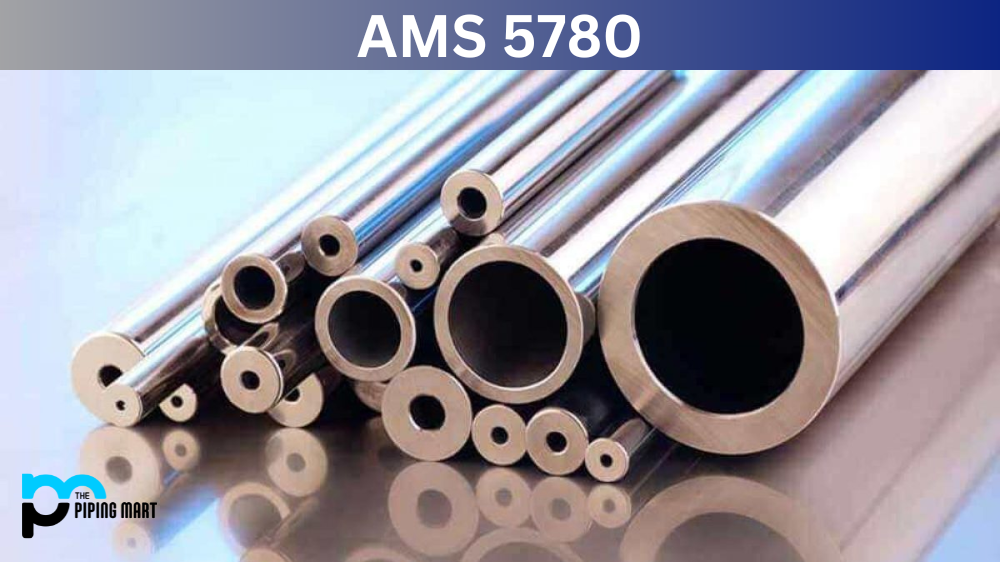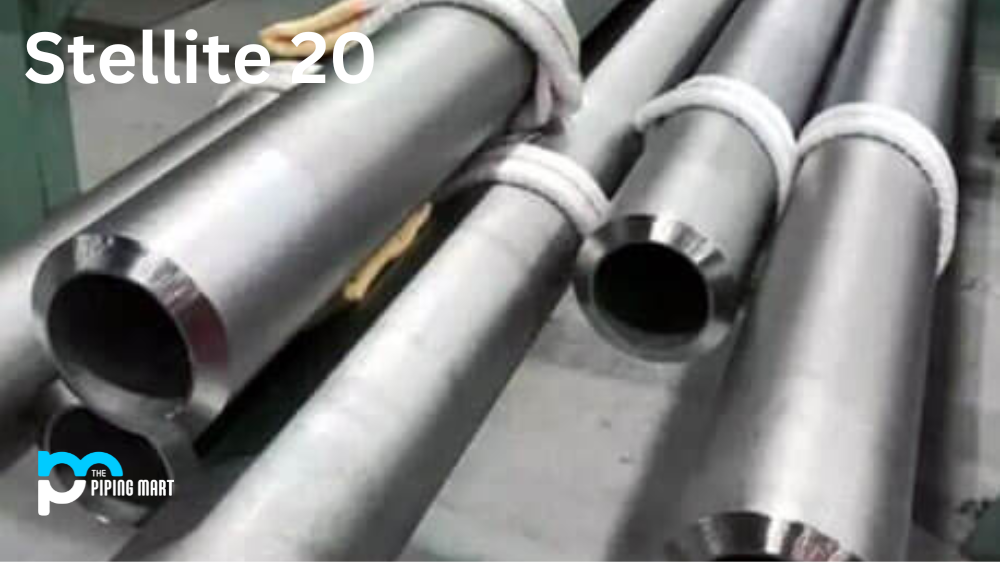If you work in the engineering industry, chances are you’ve encountered AISI 4320 Alloy Steel. 4320 Alloy Steel is a high-carbon, chromium-nickel-molybdenum steel that offers great mechanical properties and excellent corrosion resistance. AISI 4320 Alloy Steel, also known by its UNS G43200 designation, is a versatile material that finds many applications in various industries. This alloy steel has a unique composition that offers excellent mechanical properties, such as high toughness and wear resistance. AISI 4320 Steel contains high amounts of nickel, chromium, and molybdenum, contributing to its exceptional performance. Additionally, it has a high hardenability and is heat-treatable, making it suitable for various applications. Whether used in the automotive industry or the construction field, AISI 4320 Alloy Steel is a reliable and valuable material that will continue to be in demand. This blog post will look at the uses of UNS G43200, its corrosion resistance, heat resistance, heat treatment properties, machining capabilities, and welding characteristics.
What Forms of AISI 4320 is Available at Piping Mart?
- Nut
- Bar
- Bolt
- Pipe
- Screw
- Tubing
- Valves
- Washers
- Flanges
- Fasteners
- Electrodes
- Stud Bolts
- Sheet Plates
- Pipe Fittings
- Forged Fitting
- Instrumentation Fittings
AISI 4320 Composition
| Element | Content (%) |
|---|---|
| Iron, Fe | 95.855 – 96.98 |
| Nickel, Ni | 1.65 – 2.00 |
| Manganese, Mn | 0.450 – 0.650 |
| Chromium, Cr | 0.400 – 0.600 |
| Molybdenum, Mo | 0.200 – 0.300 |
| Carbon, C | 0.170 – 0.220 |
| Silicon, Si | 0.150 – 0.300 |
| Sulfur, S | 0.0400 |
| Phosphorous, P | 0.0350 |
AISI 4320 Physical Properties
| Properties | Metric | Imperial |
|---|---|---|
| Density | 7.85 g/cm3 | 0.284 lb/in³ |
| Melting point | 1422°C | 2590°F |
AISI 4320 Mechanical Properties
| Properties | Metric | Imperial |
|---|---|---|
| Tensile strength | 580 MPa | 84100 psi |
| Yield strength | 425 MPa | 61600 psi |
| Bulk modulus (typical for steel) | 140 GPa | 20300 ksi |
| Shear modulus (typical for steel) | 80 GPa | 11600 ksi |
| Elastic modulus | 190-210 GPa | 27557-30458 ksi |
| Poisson’s ratio | 0.27-0.30 | 0.27-0.30 |
| Elongation at break (in 50 mm) | 29% | 29% |
| Reduction of area | 58% | 58% |
| Hardness, Brinell | 163 | 163 |
| Hardness, Knoop (converted from Brinell hardness) | 184 | 184 |
| Hardness, Rockwell B (converted from Brinell hardness) | 84 | 84 |
| Hardness, Vickers (converted from Brinell hardness) | 170 | 170 |
| Machinability (annealed and cold drawn. Based on 100 machinability for AISI 1212 steel) | 60 | 60 |
AISI 4320 Thermal Properties
| Properties | Metric | Imperial |
|---|---|---|
| Thermal expansion co-efficient (@ -18-95°C/-0.400-203°F, condition of specimen unknown) | 11.3 µm/m°C | 6.28 µin/in°F |
| Thermal conductivity (typical steel) | 44.5 W/mK | 309 BTU in/hr.ft².°F |
AISI 4320 Equivalent
- ASTM A29 (4320)
- ASTM A322 (4320)
- ASTM A331 (4320)
- ASTM A519 (4320)
- ASTM A535 (4320)
- ASTM A752 (4320)
- SAE J1397 (4320)
- SAE J404 (4320)
- SAE J412 (4320)
AISI 4320 Uses
SAE/AISI 4320 is a general-purpose alloy steel that can be used for a variety of applications. This grade of steel is often used in the production of forgings that require high strength and toughness. It is also widely used for applications such as gears and shafts where wear resistance is important. Additionally, this grade of steel has been used for aircraft components such as landing gear parts, bushings, and other parts requiring superior fatigue strength.
AISI 4320 Uses in Industries
Automotive Industry
AISI 4320 is commonly used in the automotive industry for components such as gears, shafts, and axles. This steel grade has a high toughness and fatigue resistance, making it ideal for heavy-duty vehicle applications.
Aerospace Industry
The aerospace industry also utilizes AISI 4320 for its high strength and wear resistance properties. This steel is often used in aircraft landing gear, engine components, and other critical parts that require durability and reliability.
Oil and Gas Industry
In the oil and gas industry, AISI 4320 is used for drilling tools, valves, and other equipment subjected to extreme pressure and harsh environments. Its high tensile strength and impact resistance suit these demanding applications.
Construction Industry
AISI 4320 is also commonly used in the construction industry for structural components such as crane hooks, gears, and shafts. Its toughness and hardenability make it suitable for heavy-duty construction machinery.
Manufacturing Industry
In the manufacturing industry, AISI 4320 is often used for machine parts that require high levels of strength and durability. This includes gears, bearings, axles, and other components used in machinery for various industries such as agriculture, transportation, and energy production.
AISI 4320 Corrosion Resistance
SAE/AISI 4320 exhibits excellent corrosion resistance when exposed to both atmospheric conditions and many corrosive environments or solutions. This grade of steel resists most organic acids as well as chloride solutions such as seawater or brine solutions containing chloride ions. In addition, it has good resistance to reducing agents such as sulphuric acid and nitric acid, provided they are not highly concentrated.
AISI 4320 Heat Resistance
SAE/AISI 4320 has excellent heat resistance due to its content of chromium and molybdenum, which provide higher oxidation temperatures compared with carbon steels. The maximum temperature that this grade can be subjected to without suffering permanent damage is around 850°C (1562°F). Additionally, this grade has good scaling resistance at temperatures up to 800°C (1472°F).
AISI 4320 Heat Treatment
SAE / AISI 4320 can be hardened by heating it between 820 – 860°C (1508 – 1580°F) followed by oil quenching, resulting in a Rockwell hardness range between HRC 50 – 55 depending on the size and shape being treated. For best results when hardening this grade, it’s recommended to perform double tempering cycles, each at temperatures below 400°C (752°F). Following hardening, it should also be tempered between 150 – 370°C (302 – 698°F) depending on desired hardness level before use.
AISI 4320 Machining
Due to its relatively high Sulphur content, machining operations must be performed with care using sharp tools at slow speeds combined with generous amounts of lubrication if any burrs are to be avoided. As part of pre-machining operations, it’s also recommended to stress relieve the material prior to machining if possible, especially when components are large or thick-walled, which could otherwise suffer from distortion due to internal stresses caused by machining operations themselves or any other previous treatments applied on material prior machining operations was performed. During post-machining operations, parts should again preferably be stress relieved prior to use if possible, especially when components are relatively large or thick-walled, which could otherwise suffer from distortion due to internal stresses caused by machining operations themselves or any previous treatments applied on material prior to these said machines were performed.
AISI 4320 Welding
Welding of SAE / AISI 4320 steel is a complicated process, but with the right preparation and safety measures, a skilled welder can produce excellent results. The steel is an alloy containing chromium, nickel, and molybdenum, making it exceptionally strong and heat-resistant – ideal for heavy machinery and transportation applications. In order to join two pieces of 4320 steel securely, welders must use precise techniques that take into consideration the alloys’ higher ductility. Careful weld preparation, correct filler material choice, reducing sulfur content in the welding environment, and application to preheat are just some components essential for a successful welding job on steel. With patience and attention to detail, any weld accomplished on SAE / AISI 4320 materials will be able to withstand even extreme temperatures and pressure.
Conclusion:
In conclusion, while SAE/AISI 4320 steel alloy offers great mechanical properties making it ideal for a number of engineering applications, there are several factors that need to be taken into consideration before using this alloy in your project. From taking proper care when welding the material together, through preheating and post-heating processes when performing machining operations all way down to selecting the right type of cutting tool according to appropriate speed settings combined with a generous amount of lubrication during operation, all these parameters need careful attention if best possible results are expected from using this particular grade forging materials in your specific application.

Abhishek is a seasoned blogger and industry expert, sharing his insights and knowledge on various topics. With his research, Abhishek offers valuable insights and tips for professionals and enthusiasts. Follow him for expert advice on the latest trends and developments in the metal industry.




